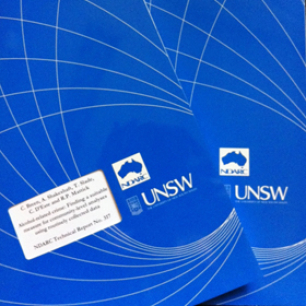NDARC Technical Report No. 25 (1995)
SUMMARY
Within a few years of recognition of the HIV pandemic, international authorities (including the World Health Organisation) recommended that HIV prevention measures implemented in communities should generally be available in prisons. Prominent Australian public health officials in recent years, such as Dr. Carmen Lawrence (Minister for Human Services and Health) and Dr. Brendan Nelson (former President of the Australian Medical Association), have urged serious consideration of Prison Syringe Exchange (PSE) programs. Some stakeholders in the correctional system, such as prison officers, have vehemently opposed consideration of PSE and proposed industrial action if a PSE is implemented.
Transmission of HIV and other blood borne infections in prisons associated with injecting and tattooing has been relatively rare for many years. Recent publications have begun to challenge that view. Sexual transmission may also be an important factor in the spread of some viruses such as HIV. These infections may subsequently be widely disseminated in the general community after inmates are released.
A number of HIV prevention measures have been established in the community in recent years. Several, such as needle exchange and methadone treatment, have been demonstrated to be effective. Few effective HIV prevention measures have been implemented in prisons anywhere in the world. There are only two (pilot) syringe exchange programs existing in the world, both in Switzerland. As yet, no assessment of the issues involved in implementation or feasibility of a PSE has been made in Australia. This study was conducted to consider the issues raised by PSE and assess possible benefits, possible adverse consequences and the feasibility of implementing PSE.
The feasibility of PSE was examined by documenting issues raised by key stakeholders in the New South Wales (NSW) prison system generated in facilitated discussion groups. Groups made up of individuals doing similar work pertinent to the NSW prison system were asked to discuss problems in a correctional context associated with syringe use, effectiveness of and problems associated with existing HIV and hepatitis prevention measures, and possible benefits and costs of establishing and evaluating a pilot syringe exchange program in prisons.
The views of stakeholders will directly influence the operation of a PSE. Groups comprising prison officers, prison medical staff and ex-inmates provided information on likely safety issues associated with a PSE, emphasising the necessity for effective, broad-range treatment and harm minimisation programs in prisons for injecting drug users. Groups, including prison staff, questioned the implementation and effectiveness of existing HIV prevention programs. Groups comprising community agencies and politicians addressed the likely wider community impact.
Based on these discussions, we conclude that a pilot PSE program in a prison setting would only be feasible provided there were certain strict limitations. The primary concern of all groups was the current policy of the Department of Corrective Services which opposes the introduction or exchange of syringes in any capacity. Prison officers were also unanimously opposed to PSE. This issue would need to be negotiated and cooperation of prison staff secured before implementation of any pilot PSE could be considered.
A frequently offered suggestion for reducing security risks of a PSE was the allocation of specialised sections of prisons to deal specifically with selected drug injectors. These specialised wings might provide a broad range of treatments and harm minimisation strategies, possibly including PSE. Custodial, counselling, and medical staff for these areas would be specially selected and trained and clearly appraised of their own roles and the goals of the unit.
Several options for implementing and evaluating a PSE were suggested. The relative merit of each option is discussed. We conclude that the introduction of a PSE in NSW is feasible only if strict guidelines are followed. The strenuous opposition to PSE under any circumstances by members of the prison officers group is noted. The strength of this opposition, if sustained, is likely to be a critical factor.


